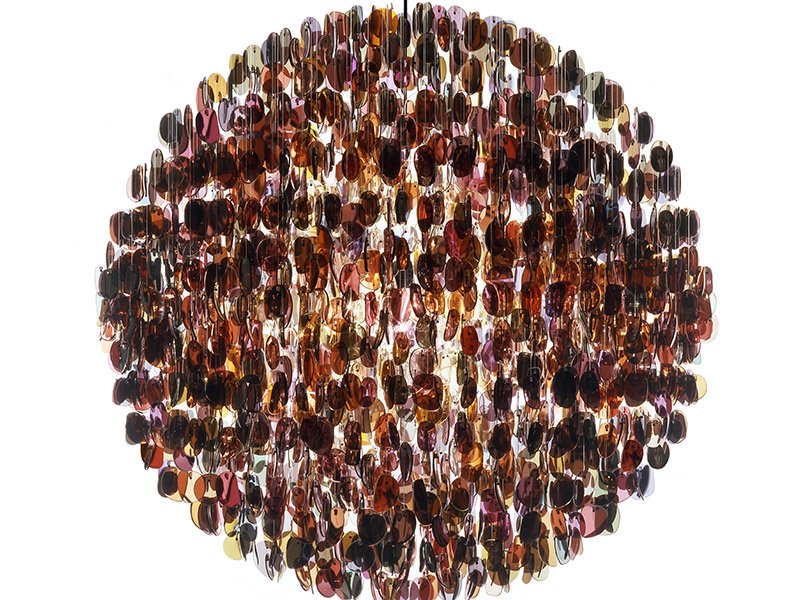Luxury Conversions: The Art of “Upcycling”
From international heritage brands to individual innovators, designers are transforming forgotten materials into high-value desirables
From international heritage brands to individual innovators, designers are transforming forgotten materials into high-value desirables
Forget repurposing, reclaiming, and recycling – luxury upcycling or “haute-cycling” results in a final product that is more beautiful, of higher quality, and considerably more covetable than the sum of its parts.
Add to this the fact that creations are often unique and custom-made, and you have a perfect formula for the discerning yet sustainably minded consumer. While established names such as Maison Margiela and Christopher Raeburn have made a signature of luxe upcycling in the field of fashion, there’s a treasure trove of exquisite examples to be discovered beyond the catwalk.
Unconventional gems: Ludmila Navarro
Spanish artist and jewelry designer Ludmila Navarro takes a magpie approach to sourcing jewels and vintage elements for her unique and colorful creations, scouring markets, antique shops, and auctions. “I’m inspired by giving value to old things and I try to tell a story with the composition of each design,” she says of her one-off rings, necklaces, brooches, and bracelets.
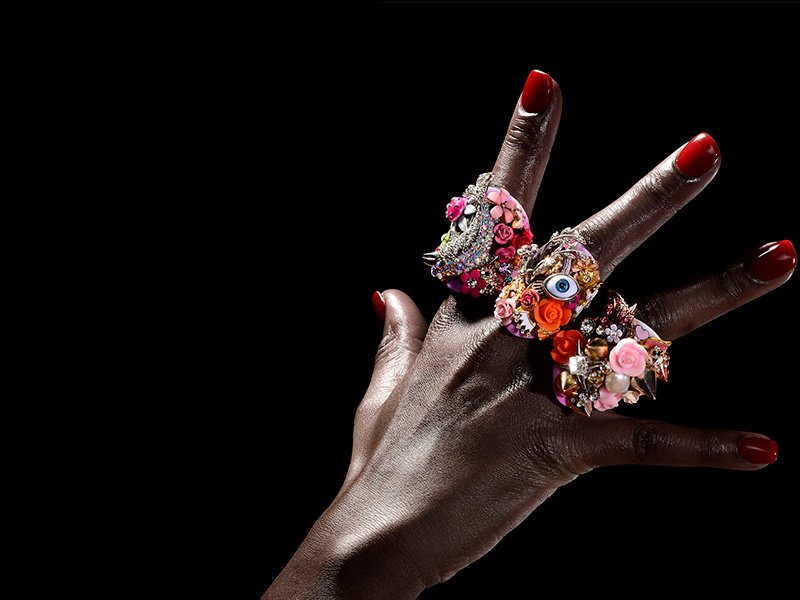
Fabrics of time: Rebecca Vizard, B. Viz Design
Pillow and accessory designer Rebecca Vizard has been traveling the world for over 21 years in search of fine antique textiles for her creations. “I particularly like to find those with raised metallic embroidery on a background that’s ‘beyond repair’, because I feel like I’m saving someone’s precious work from a century or more ago,” she says. “We painstakingly cut around the embroidery, then re-stitch it by hand on to a sturdier background, such as velvet, leaving the design as originally created or rearranging the components for a more contemporary look.” Think boudoir pillows made from 17th-century Italian silk embroidery and scrollwork throw cushions created from 19th-century liturgical capes.
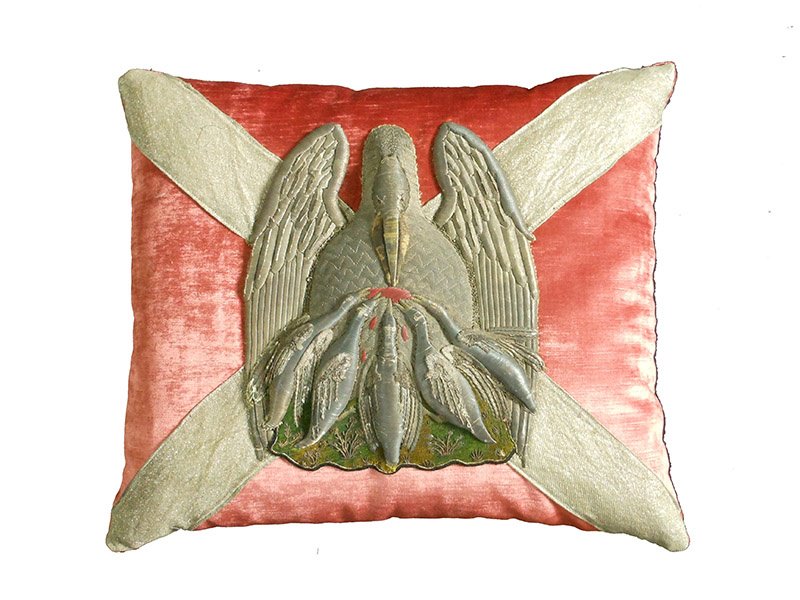
Turning the tables: Greg Klassen
For his River Collection, artist and furniture-maker Greg Klassen uses “fallen and storm-damaged trees” taken from the banks of the Nooksack river in Washington state that winds its way below his studio, combining the timber with hand-cut blue glass to create beautifully crafted tables. “Using fallen trees is a chance to give them a second life as functional art,” he says.
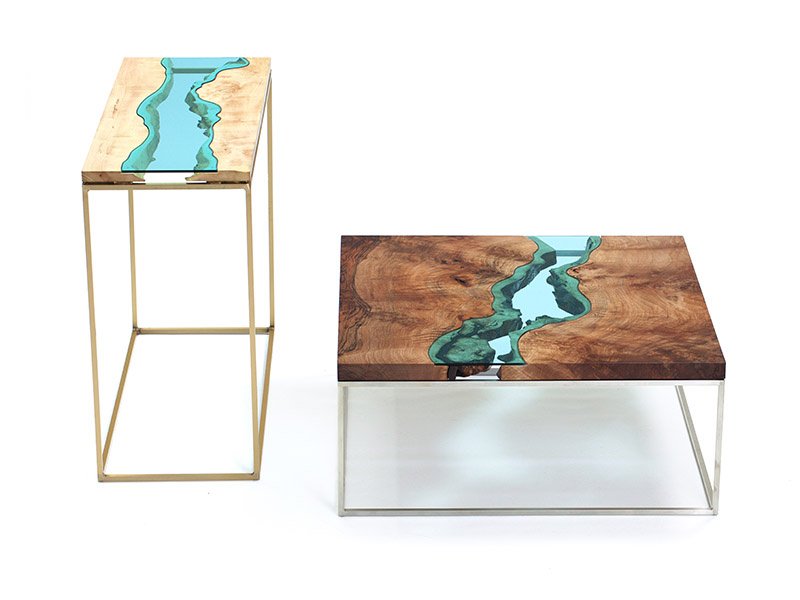
Flights of fancy: Fallen Furniture
Brothers Harry and Ben Tucker “aim to deliver products that elevate previous or homespun notions of recycled or upcycled furniture”. Working largely on a bespoke basis, they transform aviation parts into statement pieces for clients, fusing “industrial heritage and high-end craftsmanship” in designs that range from a chair made from the engine cowling of a Boeing 737 to a drinks cabinet made from an RAF MK1 practice cluster bomb.
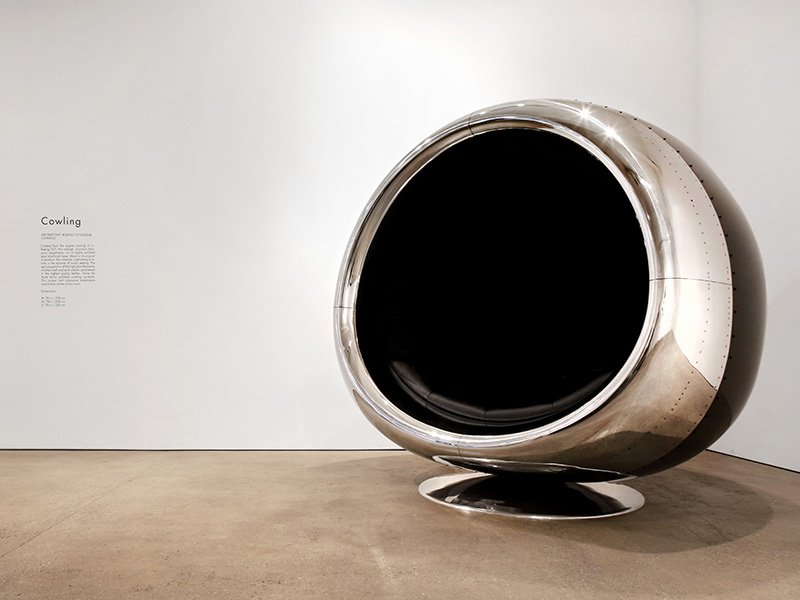
Hot seats: Yinka Ilori
“What inspires me about upcycling is being able to tell new stories with old pieces of furniture that people no longer love,” says London-based Nigerian furniture maker and artist Yinka Ilori. Taking a stand against unnecessary waste in European and African consumer culture, he uses discarded furniture and found objects to create his custom-made chairs, which are humorous, colorful, and draw on the parables and fabrics he was surrounded by as a child.
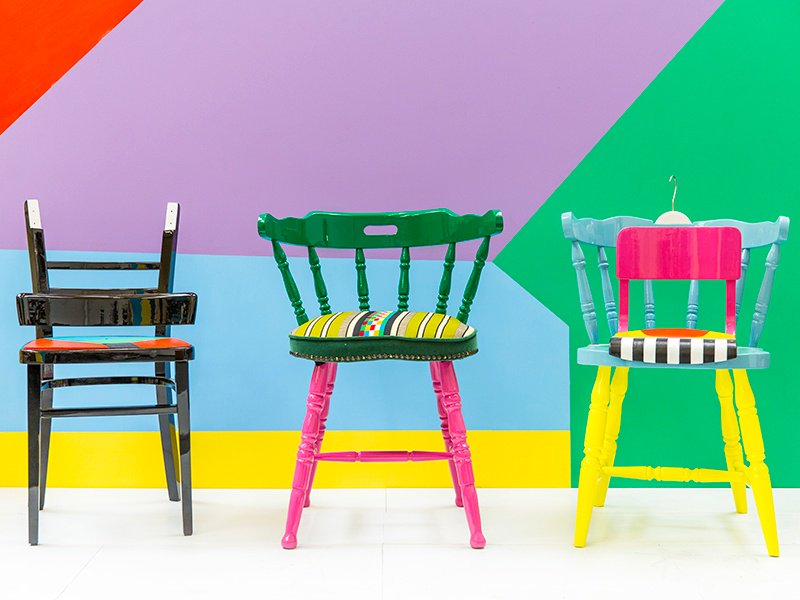
In a new light: Stuart Haygarth
The chandeliers of British artist Stuart Haygarth are extraordinary examples of everyday objects reimagined as artistic statements. From designs made entirely out of spectacles to those born from flotsam and jetsam found on a beach, his pieces are greatly sought after. “My work revolves around everyday objects, often collected in large quantities, categorized and presented in such a way that they are given new meaning,” he says. “It is about banal and overlooked objects gaining new significance.”
